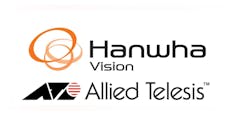There's no doubt that the face of the security industry is changing. At some recent industry tradeshows, I sensed a distinctly different vibe from both established and new companies in the industry than I have in previous years. The manner in which companies are positioning their products and services -- and the very nature of new system product introductions -- has changed dramatically over a very short time spam.
The reason: systems technologies are shifting towards a more software-centric solution.
One of the factors driving this is that users are looking for a much higher level of integration between the various security systems deployed in their facilities. This is a primary design consideration at the high end of the market, but as with any new technology trend, market makers cater to top tier users with a trickle-down effect for the masses. The security industry is no exception. Homeland defense, the gaming industry, Fortune 1000 companies and a handful of other market categories are steering security system suppliers onto a new course for systems product development whether they like it or not - with the focus shifting away from "box" solutions to integrated software-driven solutions.
Despite the hoopla regarding systems integration on virtually every cover of every magazine, the fact remains that true systems integration is only now coming to fruition. The race to integrate is an evolving storyline. Although systems have been interfaced to perform some sequential operations, today's digitally driven systems allow a much more sophisticated level of integration whereby they can perform complex operations simultaneously and automatically -- almost to the degree of artificial intelligence. However, the level of integration varies depending on the specific software-driven function that crosses platforms enabling a much broader range of applications.
The ability of integrated digital and network-based technologies to tie together previously unrelated systems has been a catalyst for advanced enterprise-level solutions. As more powerful software solutions are written, systems designers can integrate security systems and various business systems onto a single platform that can be accessed on a secure network connection using an intelligent and intuitive graphical user interface (GUI). By integrating security applications such as access control, video surveillance, object video, biometrics and fire/alarm/event monitoring, with the business applications such as point of sale (POS), human resources, physical asset management and RFID tracking-- security and management personnel now face the prospect of controlling all of their systems on a single platform. There are even software-based solutions available today that provide remote monitoring and system control capabilities on an "open" platform. This is all new -- and quite significant. By allowing various software-driven applications to operate on a single platform with integrated program commands, security systems can operate as a single entity. The result is that an integrated software system makes the management of electronic data extremely efficient.
Another benefit of software-driven enterprise integration is the ability to organize and retrieve captured and archived data and images from a centralized database. This function instantaneously matches live and/or recorded video to the data associated with specific events. This is a highly sought attribute of newer software-driven, network-based technologies since systems can be programmed to react to specific scenarios. One of the initial applications for this level of integration making its way into the mainstream is the integration of POS devices with video surveillance systems. If an event occurs which matches any pre-defined scenarios, the control platform will archive transaction data along with the multiple video feeds of the event. All pertinent information can also then be simultaneously sent to security personnel for action.
But even as this software revolution takes hold, the need for hardware still exists. For example, today's virtual matrix switching systems promise to provide enhanced levels of functionality, but they have yet to offer the proven performance and capabilities afforded by today's leading switching systems. How these systems are connected and interfaced with other security systems is another issue, and again, software is at the core of the solution.
The fact is -- the security industry has just started to really concentrate on the implementation and upgrades to the new software-centric, server-based enterprise level system solutions. I'm not saying you should throw away your boxes just yet, but I would get up to speed on new server/software developments if you have not started already.
About the author: Cynthia Freschi is the president of North American Video, one of the premier security systems integrators in the U.S. Prior to starting North American Video, Freschi was a field sales engineer for a recognized security systems integrator located in the northeast. She can be reached via her website at www.navcctv.com.


